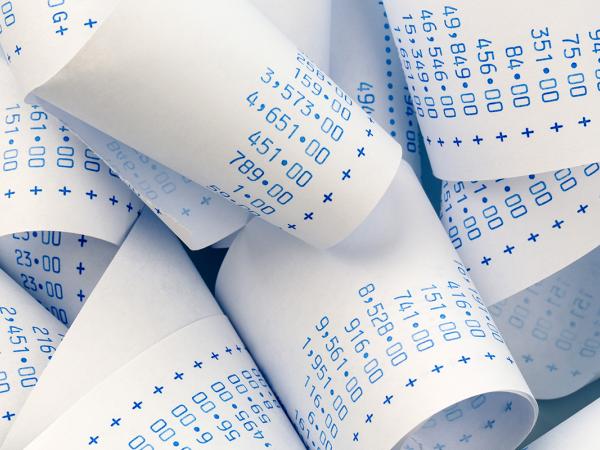Making tax digital for income tax
HMRC’s ‘Making Tax Digital’ programme is being phased in over a number of years, following the announcement in 2015 that it was the government’s intention to abolish the self assessment tax return. Making Tax Digital for VAT was the first element of the programme to be rolled out, beginning in April 2019. Making Tax Digital for income tax is now due to be introduced in phases, beginning in April 2026.

Content on this page:
Scope
Making Tax Digital (MTD) for income tax will eventually affect self-employed individuals and individuals receiving property income with annual gross income of more than £30,000 from their self-employment and property letting. Those with annual gross income of £30,000 or less from these sources are not currently in scope of MTD. The government say they are keeping the income threshold under review however it is expected to remain at £30,000 for at least the next few years.
Partnerships
The government have confirmed that MTD will become mandatory for partnerships in due course, but it is not yet known when this will be.
Digital requirements
Making Tax Digital (MTD) for income tax is a new system for recording and reporting income and expenses if you are self-employed and/or receive property income. When you come within scope of the MTD for income tax regime, you will be required to:
1. Keep digital records
You will either have to use specific accounting software packages, or apps, or maintain spreadsheets to record business transactions. Many software companies are still developing products to meet the MTD requirements. Products currently on the market are listed on GOV.UK. HMRC have said they will not be providing free software, but they expect some free products to be available from commercial software providers in due course. For more information see our Digital records section below.
2. Submit quarterly updates
You will need to submit quarterly updates to HMRC to declare business/property income and expenses for the period covered by the update. The intention is for the reports to be automatically generated by the record-keeping system, so this should not be an onerous process. The periods will be cumulative, so updates will be due for the following periods each tax year:
- 6 April to 5 July (due by 7 August)
- 6 April to 5 October (due by 7 November)
- 6 April to 5 January (due by 7 February)
- 6 April to 5 April (due by 7 May)
As can be seen from the above, the due date for submission of the quarterly update will be 7th day of the following month. Each submission effectively supersedes the previous one.
It is possible to elect for the update periods to tie in with a month end if this is more convenient. In this case, the periods become:
- 1 April to 30 June (due by 7 August)
- 1 April to 30 September (due by 7 November)
- 1 April to 31 December (due by 7 February)
- 1 April to 31 March (due by 7 May)
Note that the due dates for the submissions do not change.
3. Submit a final declaration
Provide details of the final taxable profit for the accounting period of the business, and any other taxable income in the tax year, before making a final declaration to complete the process instead of completing a self assessment tax return.
Your MTD start date
The government intends that Making Tax Digital (MTD) for income tax will eventually apply to most people who are self-employed and/or receive property income.
It was originally due to become mandatory from April 2024 however, the government announced a delay to the introduction of the programme in December 2022 and a review of the scope of the new rules, which was completed in 2023. Therefore, the timetable for compulsory compliance with the MTD rules is now as follows:
- From 6 April 2026, for those with annual gross income of over £50,000 from self-employment and property letting
- From 6 April 2027, for those with annual gross income of between £30,000 and £50,000 from self-employment and property letting
So MTD will not currently apply to those who have annual gross income of £30,000 or less.
The government have confirmed the income threshold will be kept under review however it is expected to remain at £30,000 for at least the next few years.
If you are self-employed and receive property income, the gross annual income figure above applies to total gross income from both sources.
HMRC will review information on self assessment tax returns each year. If a tax return shows gross income of more than the relevant MTD threshold from self-employment and/or rental income they will notify you that you must meet the requirements of MTD from 6 April AFTER the 31 January filing deadline for the self assessment tax return. Alternatively you will need to apply for exemption from MTD, and we explain more about this in the section on exemption below.
The first year that self assessment tax returns will be reviewed for this purpose are those for the 2024/25 tax year. Therefore if your gross income from self-employment and/or rental income is more than £50,000 on your 2024/25 tax return you will be required to follow the MTD rules from 6 April 2026, as this is 6 April after 31 January 2026, being the filing deadline for 2024/25 tax returns (unless you successfully apply for exemption from MTD.)
It will be possible to join MTD voluntarily before you are mandated to do so.
Gross income
When working out your gross income from self-employment or property letting activities, remember that if any deductions are made from the income before you receive it, your gross income amount is the amount before the deductions are made. To see how this works, see the examples below.
Exemption
You will not be required to comply with Making Tax Digital (MTD) for income tax in the following circumstances:
- You do not have a UK National Insurance number (although you will be expected to comply with MTD if you are in scope if you eventually obtain an NI number).
- You are a foster carer or shared lives carer and your only income is qualifying care income.
It will also be possible to apply for exemption from Making Tax Digital (MTD) if you are digitally excluded – for example, you have an unreliable broadband connection, disability prevents you from using computers, you live in a remote location with poor broadband access, etc.
The law states that a person is digitally excluded if for any reason (including age, disability or location) it is not reasonably practicable for them to use electronic communications or to keep electronic records.
You can also apply for exemption if you are a practising member of a religious society (or order) whose beliefs are incompatible with using electronic communications or keeping electronic records.
While your application for exemption from MTD is being considered by HMRC, you are not required to comply with the MTD rules.
The process for claiming exemption has not yet been confirmed by HMRC, but it is expected that it will be possible to make an application for exemption from approximately April 2025. We will update this page once more information becomes available.
HMRC’s current guidance on applying for exemption from MTD is available on GOV.UK.
Digital records
A key element of Making Tax Digital (MTD) for income tax is that there is a legal requirement to maintain business records digitally. This means that some kind of electronic record-keeping system will need to be used. This could be an accounting software package, a spreadsheet-based system, or via an ‘app’ on a smartphone.
HMRC have said they are not producing their own software or app to enable digital records to be maintained, so it will be necessary to choose or purchase a system you feel is suitable for your business and within your budget.
HMRC maintains a list of products that comply with the digital record-keeping requirements on GOV.UK. We discuss choosing software in our Software section below.
If you do not keep your records digitally now you need to decide how you are going to change to a digital system, and when you are going to do this, bearing in mind when you expect to be in scope of MTD. This could depend on several factors such as:
- How experienced or confident are you when using IT/software?
- Do you have access to the internet? If so, how reliable is your broadband service?
- Do you have anyone to ask if you need any help? If so, are they already using a particular product in their own business that they can recommend to you?
- What kind of budget do you have (if any)?
- What hardware you are most comfortable using (e.g. laptop, tablet, phone etc)? Does it have the necessary system requirements to run the software?
- Is there anywhere you can get some training? (YouTube videos, chat forums, local IT support groups, local charities, etc.)
Software
There is no record-keeping software available from HMRC, so it will be necessary to use a commercial system you feel is suitable for your business and within your budget. The cost of the software packages varies between suppliers. The government have pledged to ensure that some suppliers offer free products, but there are currently very few on the market. Free products may also be subject to specific limitations such as that the product may only be free for a limited time or may only be for the simplest version of a software developer’s product. Therefore, you must be careful when reviewing potential software products to try to ensure you get the most suitable product for your circumstances.
There are lots of different products on the market so it might be difficult to choose one that you think will work for you, both now and in the future. Some things to consider when choosing a product might be:
- Are you clear about the costs/charges associated with the product, if any?
- Does the product offer customer support if you have a problem/get stuck? If so, how is this delivered – e.g. email, webchat, phone? Are there any additional charges if you need support?
- Can you transfer all your data from the product to a new product easily if you decide to change systems? Does the system back up the data automatically or will you need to do this yourself regularly?
- Can you print reports from the system easily? Can you download/save data or reports etc easily from the system?
- Does it meet any accessibility need you may have?
- Do you need the product to have a Welsh translation?
- Do you want a system that links to your bank account and automatically downloads transactions?
- Do you have any particular requirements in terms of functionality of the product?
- How many transactions do you have each quarter? Is there a limit on the number of transactions (for example, per month or per quarter) the software will allow? Do you anticipate the number of transactions to increase as your business grows?
- Is the product useful for any other aspect of your business?
- Is the product fully compatible with your hardware/other software?
- Are software updates done automatically or do you (as the user) need to regularly check for programme updates?
Bridging software
Bridging software should also be available in due course. This software will enable those using spreadsheets for record-keeping to link to HMRC’s computer systems and submit the required quarterly update information.
Help from HMRC
If you will need some help to be able to meet the MTD rules, HMRC will be offering support and assistance, but it is not yet clear how this will be provided. We will update this page when more information becomes available.



